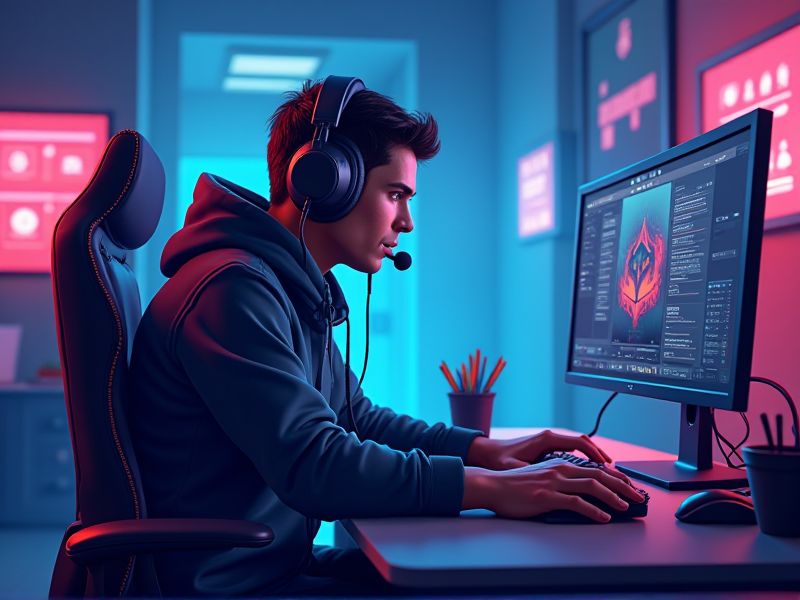
To excel in PvP, one must adopt a mindset similar to Kobe Bryant's, who emphasized the importance of perseverance and teamwork. Bryant noted, "The important thing is that your teammates have to know you're pulling for them and you really want them to be successful," highlighting the value of unity in competitive environments. This unity is encapsulated in the phrase "United we stand, divided we fall," which underscores the strength that comes from collective effort and coordination. By fostering a collaborative environment and continuously improving through feedback, individuals can enhance their PvP performance significantly.
HOW TO BE BETTER AT PVP
Constant Communication
Effective and continuous communication in PvP scenarios ensures that all team members are immediately aware of enemy movements, enabling rapid reaction and strategic counterplay. Consistent information sharing minimizes the risk of miscommunication, which can lead to tactical errors and missed opportunities. Clear, concise updates foster real-time decision-making and maintain overall team cohesion during high-pressure encounters. As a result, teams that prioritize constant communication tend to exhibit improved coordination, ultimately yielding better in-game performance and more effective tactical execution.
Map Awareness
Increasing your map awareness in PvP means constantly scanning your mini-map to track enemy movements and identify potential threats, which directly reduces the element of surprise by adversaries. Frequent observation enables you to pinpoint high-traffic zones and strategically route your movements, giving you the initiative to control engagements. By analyzing the positioning patterns of opponents, you can predict enemy strategies and adjust your tactics often, leading to improved response times in high-stakes encounters. This heightened situational awareness empowers you to preemptively counter enemy actions, turning reactive play into proactive control over the battlefield.
Tactical Positioning
Tactical positioning in PvP means securing high ground and using environmental cover to reduce enemy exposure while increasing your field of vision. Balancing aggression and caution is key, as shifting between offensive pushes and defensive retreats forces opponents into mistakes. Analyzing map layouts and traffic data helps you identify choke points and strategic angles where you can outflank adversaries. Incorporating constant situational awareness and data-driven decision-making turns every engagement into a tactical advantage.
Predictive Movement
Predictive movement in PvP hinges on anticipating enemy behavior, allowing you to reposition before opponents fully commit to their actions. Observing and analyzing an opponent's movement patterns helps you forecast their next move, which in turn creates opportunities to counterattack or avoid damage. Regular practice in recognizing subtle cues and integrating game data into your decision-making process enhances your ability to predict enemy trajectories under pressure. Consistently sharpening these skills shifts the dynamic from reactive play to a more strategic, proactive stance that maximizes your competitive edge.
Resource Management
Effective resource management in PvP means tracking your energy, cooldowns, and available tools to ensure you're never caught off guard. Prioritizing key resources during critical moments allows you to launch timely counterattacks or defenses, directly influencing match outcomes. Balancing consumption with strategic conservation pushes you toward more adaptable, data-backed gameplay by ensuring you're always ready to engage. Monitoring your usage in real time and adjusting strategies accordingly transforms resource management from a routine task into a decisive tactical advantage.
Adaptability
Adaptability in PvP means continuously learning and adjusting to different opponent tactics. Observe enemy strategies carefully and modify your approach or gear mid-match to meet emerging challenges. Experimenting with various play styles and techniques sharpens your ability to respond fluidly in real-time. Regular practice sessions and detailed reviews of your matches provide data-driven insights to further refine your adaptive strategies.
Reaction Training
Reaction training is essential for reducing response time during high-stakes PvP encounters, as faster processing speed directly improves in-game decision-making. Consistent practice with targeted drills builds stronger neural pathways, which translate into nearly instantaneous reactions during gameplay. Utilizing software-based simulators or in-game training modules allows for data-driven analysis, ensuring that reaction improvements are both measurable and specifically tailored to combat scenarios. Emphasizing pattern recognition and spatial awareness during these exercises further sharpens your instinctive responses, ultimately boosting your overall PvP performance.
Equipment Optimization
When engaging in PvP, prioritize equipment optimization by rigorously analyzing performance data, ensuring each gear upgrade delivers a measurable boost to your overall effectiveness. Carefully select items that not only offer superior base stats but also synergize with your build, enhancing both offense and defense dynamically during combat. Align improvements with evolving meta trends by regularly benchmarking your stats against competitors, and adjust your equipment loadout to counter specific threats. Maintain a balance between raw damage potential and survivability enhancements, so that every upgrade produces a quantifiable advantage on the battlefield.
Team Coordination
Effective PvP team coordination results from maintaining continuous, clear communication that aligns each member's role with overall strategic objectives. Using voice chat and integrated data-sharing tools significantly reduces latency in decision-making, ensuring actions are timely and synchronized. Regularly reviewing performance metrics and conducting post-match analyses enables teams to pinpoint and address weaknesses in strategy and coordination. By establishing a clear chain of command and predefined roles, teams can achieve adaptive, data-informed strategies that consistently improve competitive outcomes.
Strategic Adaptation
Begin by analyzing opponents' behaviors and tactics to identify exploitable patterns while tracking key metrics. Adapt your loadouts and positioning based on real-time data and observed vulnerabilities during encounters. Regularly review performance statistics to refine strategic choices, ensuring your gameplay evolves with emerging trends. Finally, integrate structured practice sessions with feedback loops to continuously optimize your combat and decision-making skills.
Summary
Constant communication ensures that teammates are consistently aligned, preventing unexpected encounters and maximizing collective responsiveness. Map awareness equips you with the critical insight needed to identify enemy movements, anticipate ambushes, and secure valuable control points. Tactical positioning enables you to exploit cover, determine advantageous engagement ranges, and force opponents into less favorable scenarios. Deploying these strategies holistically enhances overall performance, transforming reactive play into proactive dominance in PvP engagements.
